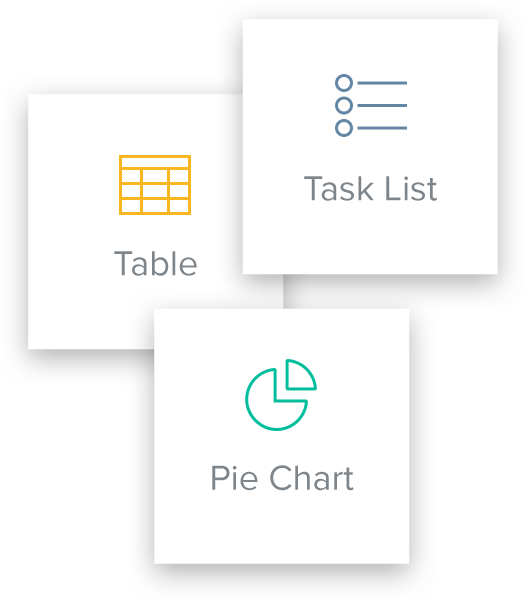How to Write a Business Proposal
Step-by-Step Guide with FREE Templates and Examples – 2023
Learn how to write a business proposal that wins clients, customers, and partners.
Updated by Xtensio
Table of Contents
What is a Business Proposal?
A business proposal is a document that presents your business idea to potential investors, clients, partners, or customers. It includes information about your business plan, product or service, objectives, pricing, and other relevant details that can help convince the recipient to take the desired action. A business proposal can be solicited or unsolicited, depending on the situation.
Creating an effective business proposal, with all its intricate details and requirements, can indeed be a challenging task. It’s like trying to make a roadmap that guides your prospective client toward understanding and, ultimately, buying into your vision. It’s an essential skill you must master, especially if you want to clinch more deals and grow your business. So, where do we start?
Think of writing a business proposal like preparing a scrumptious meal. You can’t just throw ingredients together haphazardly and hope it tastes good. You need the right mix, the perfect blend of substance and presentation. Similarly, a well-crafted business proposal balances precision, information, and appeal. And just like cooking, it’s not about how complex or simple the recipe is but it is about how well you execute it.

Let’s focus on breaking down the complexities into simple, digestible steps that any entrepreneur (or any business development executive) can follow. We will also show you how to craft a compelling narrative to win over your audience. Follow along with Xtensio’s FREE business proposal templates.
Types of Business Proposals
There are three main types of business proposals.
Informally solicited business proposal
An informally solicited business proposal is where potential clients or partner explicitly asks your business to submit a proposal. This type of proposal usually happens informally, such as during a conversation with a customer. You must listen carefully to the potential client’s problem and develop a solution.
Example: Let’s say a company you have been speaking with tells you they have difficulty accessing a particular demographic group. You can then offer a solution by customizing your product or service to target that group.
Unsolicited business proposals
An unsolicited business proposal is much like a surprise gift at your doorstep that comes without an explicit request. Imagine you’re chilling on a Sunday afternoon, and suddenly a tech startup knocks on your virtual door with a cutting-edge product that can automate half your workload. It’s not something you asked for, but now that it’s here, you’re intrigued. It’s a high-risk, high-reward situation with the potential to be a jackpot or a dud. Remember, the key here is value – if the proposal can add significant value to your business, it might be worth your attention. Unsolicited business proposals can be sent as marketing proposals.
Formally solicited business proposal
This is more like an invite-only party where you ask companies to come forward with their best solutions for a specific problem. Each proposal must comply with rules, regulations, and requirements, making this a well-structured process. Think of it as sifting through a basket full of ripe apples, choosing the one that’s just perfect for your needs. These kinds of proposals are solicited using RFP documents (Request for Proposals).


Quick Tip: Xtensio offers FREE business templates for marketing, sales, operations, and more. Start with a business template and CUSTOMIZE it to your need, easily!
Xtensio is the next-generation productivity workspace where teams create, manage, and share beautiful living business content, easily!
What goes into a business proposal?
The three Ps (postscript) of a business proposal are problem statement, proposed solution, and pricing. Make sure your business proposals contain the below sections.
Problem statement: Address your client’s current problem and how it affects their business. This means listening to their needs and developing a detailed analysis of the situation in your business proposals.
Proposed solution: Outline your solution to the problem and what sets your business proposal apart from the others. Convince potential clients that your solution is right, detailing the benefits they will receive. Basically, your company’s USP (unique selling point) should be mentioned in this proposal section.
Pricing: Pricing plays a significant role in whether or not your client decides to go with your proposal. It’s essential to consider your solution’s overall value and price it accordingly. Consider including tiered pricing options to allow customers flexibility in choosing their preferred solution.
You can use the Pricing Strategy Template to define your pricing.
Crafting a stellar business proposal is akin to creating a map that guides potential clients from their current challenges to a future of solutions tailored to their needs. Picture this: a small, ambitious web design firm is eyeing a contract with a major corporation. How do they stand out? Research, Understanding, and Strategy.
They dig into the company’s business, decoding its needs and goals. With these insights, they create a detailed, personalized business proposal. This isn’t just a document; it’s their strategy, with a clear timeline, a defined pricing plan, and samples showcasing their prowess.
And it works! They clinch the contract, showing that it’s not size but strategy that counts in business. They’ve not just won a contract; they’ve initiated a long-lasting partnership. That’s the might of well-framed and effective business proposals.

Quick Tip: Support your proposal with case studies about your similar experiences in the past. Use Xtensio’s templates to create your case studies.
How to write a business proposal, step-by-step
Whether you are an established entrepreneur, a startup founder, or a business development manager, creating a winning business proposal can make all the difference in securing funding, a partnership, or a new client. We suggest using Xtensio business proposal templates: A well-crafted and effective business proposal showcases your strengths and capabilities and demonstrates your understanding of the problem or need and your commitment to delivering a solution that adds value. Here’s what it takes to craft a well-shaped proposal.

Step 1: Initiate with a Title Page or Section
The title page serves as the first impression of your entire proposal. It should be attention-grabbing, concise, and visually appealing. The title page should include the following elements:
- A catchy headline that summarizes the purpose of the proposal
- Your company name and logo
- Your prospect’s name and company
- The date of submission
Here are some examples of effective title pages:
- “Revolutionizing the Health and Fitness Industry: A Proposal by FitNation”
- “Transforming Your Marketing Strategy: A Comprehensive Plan by Smartify”
- “Partnering for Growth: A Proposal by TechZone to ABC Corp.”
Step 2: Include Table of Contents
The table of contents helps your audience navigate through your proposal and grasp the structure of your content. It also shows that you have organized your ideas and priorities logically and coherently. The table of contents should include the following sections:
Table of Contents
- Executive Summary
- Problem Statement or Need Analysis
- Objectives and Outcome Statement
- Methodology and Approach
- Deliverables and Timeline
- Budget and Pricing
- Conclusion and Call to Action
Step 3: Explain your “why” with an Executive Summary
The executive summary is the heart of your proposal. It should provide a compelling overview of your proposal, highlighting the key points, benefits, and differentiators. The executive summary should answer the following questions:
What problem or need are you addressing?
What is your proposed solution?
What are the benefits and outcomes for the prospect?
Who are you, and why are you qualified to deliver this proposal?
Here is an example of an executive summary:
Executive Summary
Smartify proposes a comprehensive marketing strategy that enhances the online presence and lead generation of ABC Corp. By analyzing the market trends and competition; we have identified key areas where ABC Corp can gain a competitive edge.
Our strategy includes a mix of SEO, SEM, content marketing, and social media optimization tailored to the specific needs and target audience of ABC Corp. Our team of experienced marketers.
Data analysts have a proven track record of delivering measurable results for our clients, including a 20% increase in website traffic and a 30% improvement in conversion rates. We are confident that our partnership will generate more leads and sales for ABC Corp and establish a long-term competitive advantage in the industry.
Step 4: State the Problem or Need
The problem statement or need analysis should capture your prospect’s pain points, challenges, or opportunities. It should demonstrate your understanding of the context and impact of the problem and how you can provide a solution that aligns with the prospect’s goals. The problem statement should include the following elements:
A clear and concise statement of the issue
The scope and context of the problem
The stakeholders and beneficiaries of the solution
The consequences of not addressing the problem
Here is an example of the problem statement:
Problem Statement
ABC Corp has struggled to generate enough leads and customer acquisitions through its online channels. Despite investing in SEO and PPC campaigns, the website traffic and conversion rate has plateaued, and the cost per acquisition has been increasing. The competitors are gaining market share, and customer expectations are evolving. ABC Corp needs a comprehensive marketing strategy that leverages the latest digital trends and aligns with the target audience’s needs.
Step 5: Propose a Solution
Proposing a solution to the client’s challenge; this could be a problem that needs solving, an opportunity for increased growth and revenue, or a new project that needs a developer. Whatever the problem, you need to pay close attention to the client’s needs to offer a solution that meets their requirements. When writing this section, focus more on the client’s interests than showcasing your skills or business. Explain your solution to the client as clearly as possible and with relevant data and evidence that support your solution.
Here is a business proposal example: Suppose you’re a web development firm, and the client needs a mobile-friendly website. In that case, you must showcase examples of mobile-friendly sites with their demographics. Determine the client’s needs first so that your solution can offer the best return on investment possible.
Step 6: Share Your Qualifications
This section showcases your firm’s expertise, clients, processes, and success stories. This is where we emphasize what sets you apart from your competitors. We want to convey to the client why you’re uniquely qualified to solve their problem, understand their technical requirements, and deliver shining results.
For instance, if you’re presenting a pitch to develop a marketing campaign for a start-up company, highlight the skillset of your team members, such as copywriting, graphics design, and social media management. Provide specific examples of successful marketing campaigns you’ve executed and a comprehensive overview of your overall strategy and approach. This section should testify to your track record of accomplishments, convincingly showing the client why you are the perfect match for the contract.
Step 7: List Pricing Options
The pricing section should include all the necessary information about your costs and pricing plans. This section will usually include a detailed summary outlining your various services. This section should include an itemized list of the different costs associated with the project divided by the resource you’ll use, any discounts, and prices for the services.
For example, if you’re a consulting agency, the pricing plan could include an hourly rate for consulting or a fixed price for a project, broken down into different sections to demonstrate how your services will be priced to the customer. Explain the pricing options so the client understands the value of your business proposal’s services.
Step 8: Summarize with a Conclusion
While closing the proposal, reiterate the project’s goals, outline your solutions, and emphasize the numerous benefits of partnering with your business. Doing so can ensure that your conclusion is concise, focused, and unequivocally clear, leaving a lasting impression on your client. Let’s put the cherry on top of your business proposal, shall we?
To begin with, let’s summarize the client’s requirements and showcase how your business is uniquely positioned to deliver a tailored solution that fulfills all their needs. By highlighting the customized approach your company can provide, you can demonstrate your commitment to meeting and exceeding their expectations. Furthermore, it’s essential to underscore the depth of your experience and expertise, solidifying your position as the ultimate choice for the job.
Step 9: Clarify your Terms and Conditions
Keep your business proposal crystal clear and avoid confusion. Detail your pricing structure, explain why it makes sense, and define payment terms – when and how to pay, and what happens if they’re late. If you offer warranties, make sure they shine. Set out a section that establishes rules for both you and your client. Remember, clarity builds trust in any business relationship!
Step 10: Include a Space for Signatures to Document the Agreement
You can either send a separate contract once the business proposal is accepted or include a signature block in your proposal. A signature block helps ensure that both parties understand and agree to the terms and conditions of the proposed project. Without a signature, a proposal is only considered an offer and is not legally binding.
In this step, you can add the space for signatures along with the date and the name of the person signing the proposal. If there are any witness requirements, include a space for their signature too. Finally, double-check to ensure that you’ve covered all the necessary details and presented all the critical information, and then send out your business proposal to the potential client.
So this is what a well-written business proposal should look like!
TIP: Xtensio’s business proposal templates are living documents, you can send them as pdf or with live responsive links that look good on any device.
How to Get Free Business Proposal Templates?
Use Xtensio to access plenty of free business proposal templates and edit them online with your brand colors, fonts, styles, and images…
You can modify any of our templates and examples to create a;
Project Management proposal template
Social media marketing proposal
Email marketing proposal template
Digital marketing proposal
SEO proposal template
And any sales proposal
With the business proposal examples suggested above, you can follow the instructions and add all the essential elements to the entire proposal and send it to your prospective clients. It will increase your chances of winning new customers! To improve, always read others’ winning business proposal ideas from successful organizations!

Quick Tip: Use Xtensio to share your proposals with a responsive link: Your proposal will look good on any device. You can update it even after you send the link and get insights on how/when your proposal is seen.
9 ways to share your work with Xtensio.
Conclusion
As you can see, creating a strong business proposal is critical to the success of your business. By demonstrating your understanding of your prospective client’s needs, establishing credibility and expertise, and explaining how you can help them achieve their business goals, you can increase your chances of winning new business and maintaining strong relationships with your clients.
Remember to keep your proposal concise, clear, and tailored to your client’s specific needs, and take the time to showcase your company’s previous successes and unique strengths. Take your time to create a well-thought-out business proposal. It will elevate your business to the next level.









